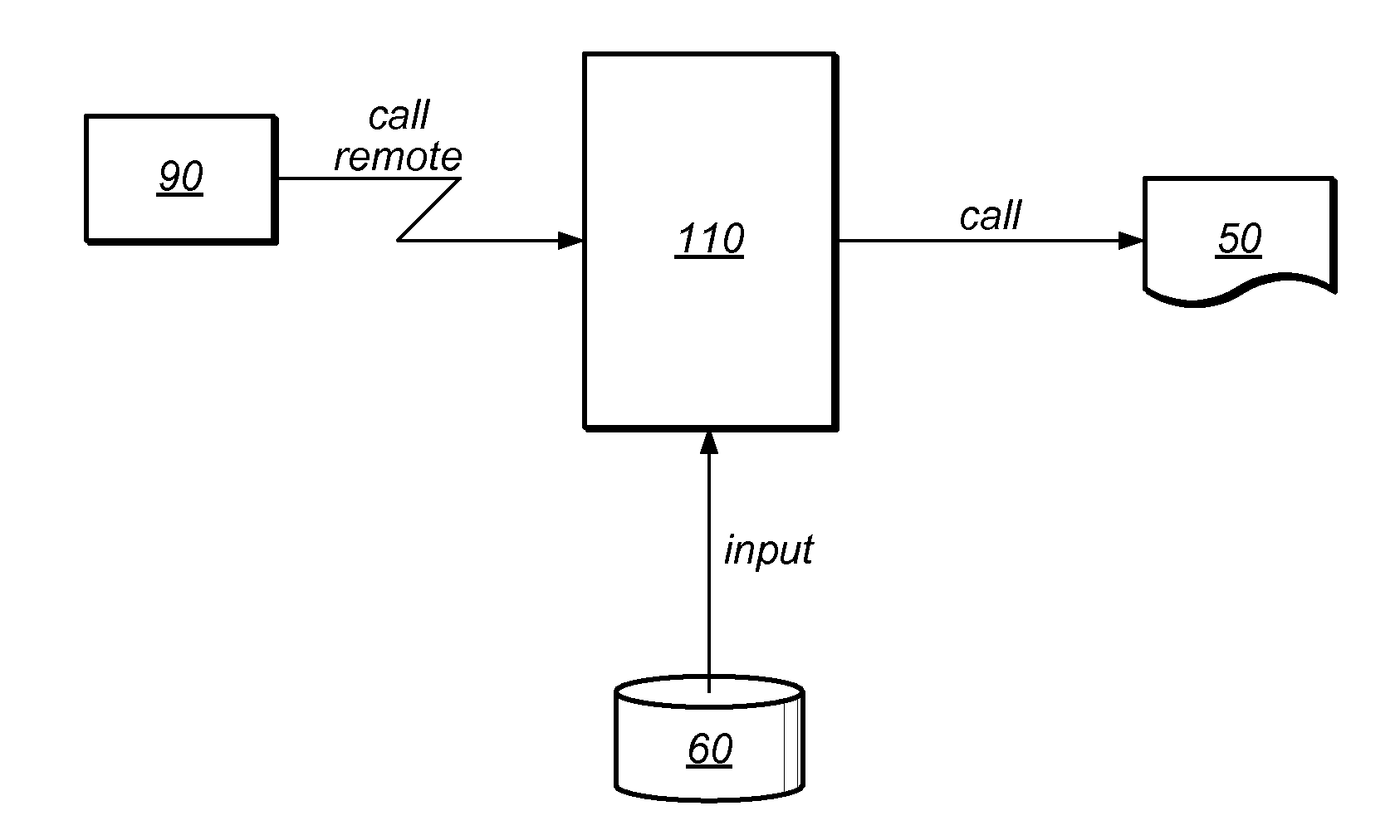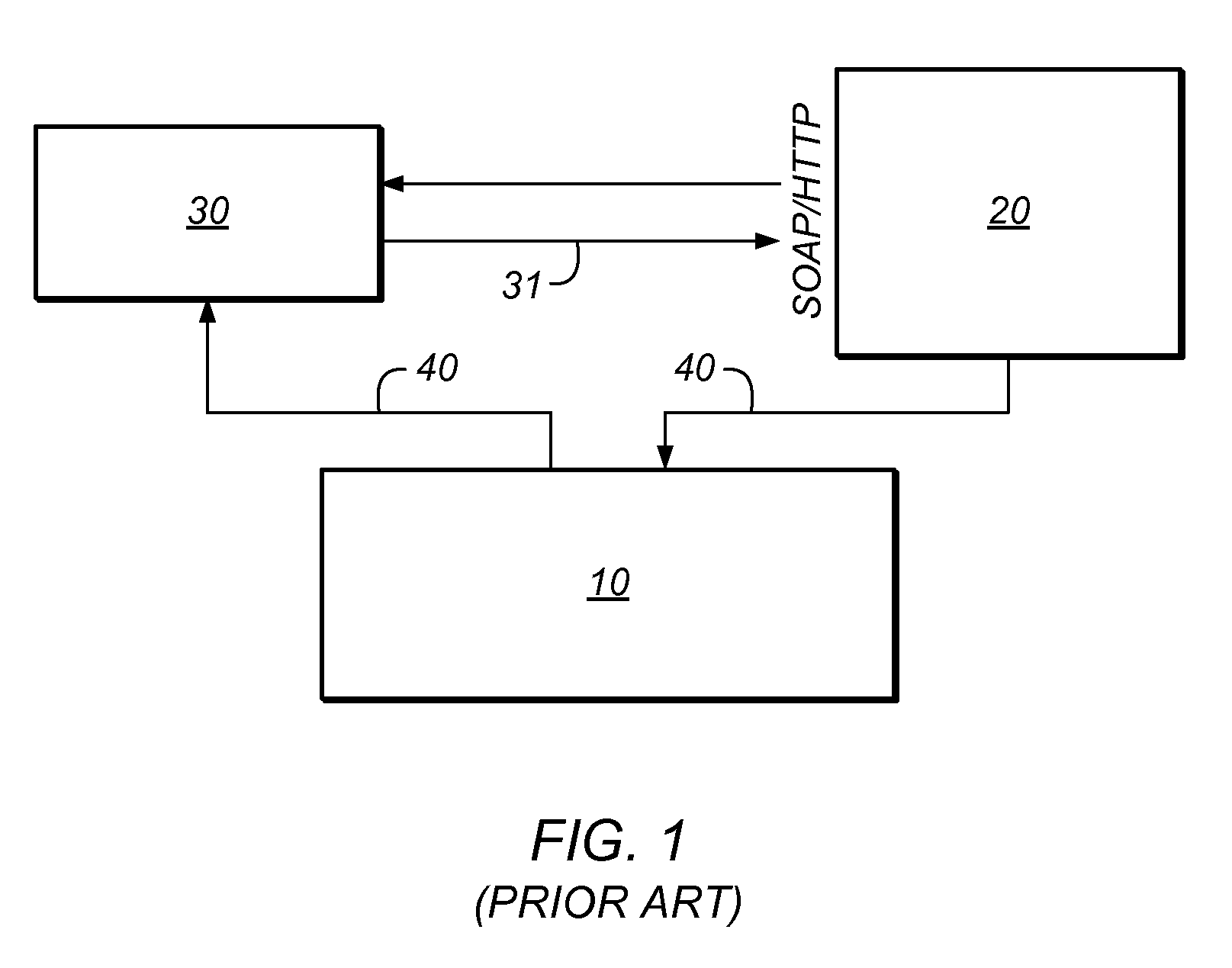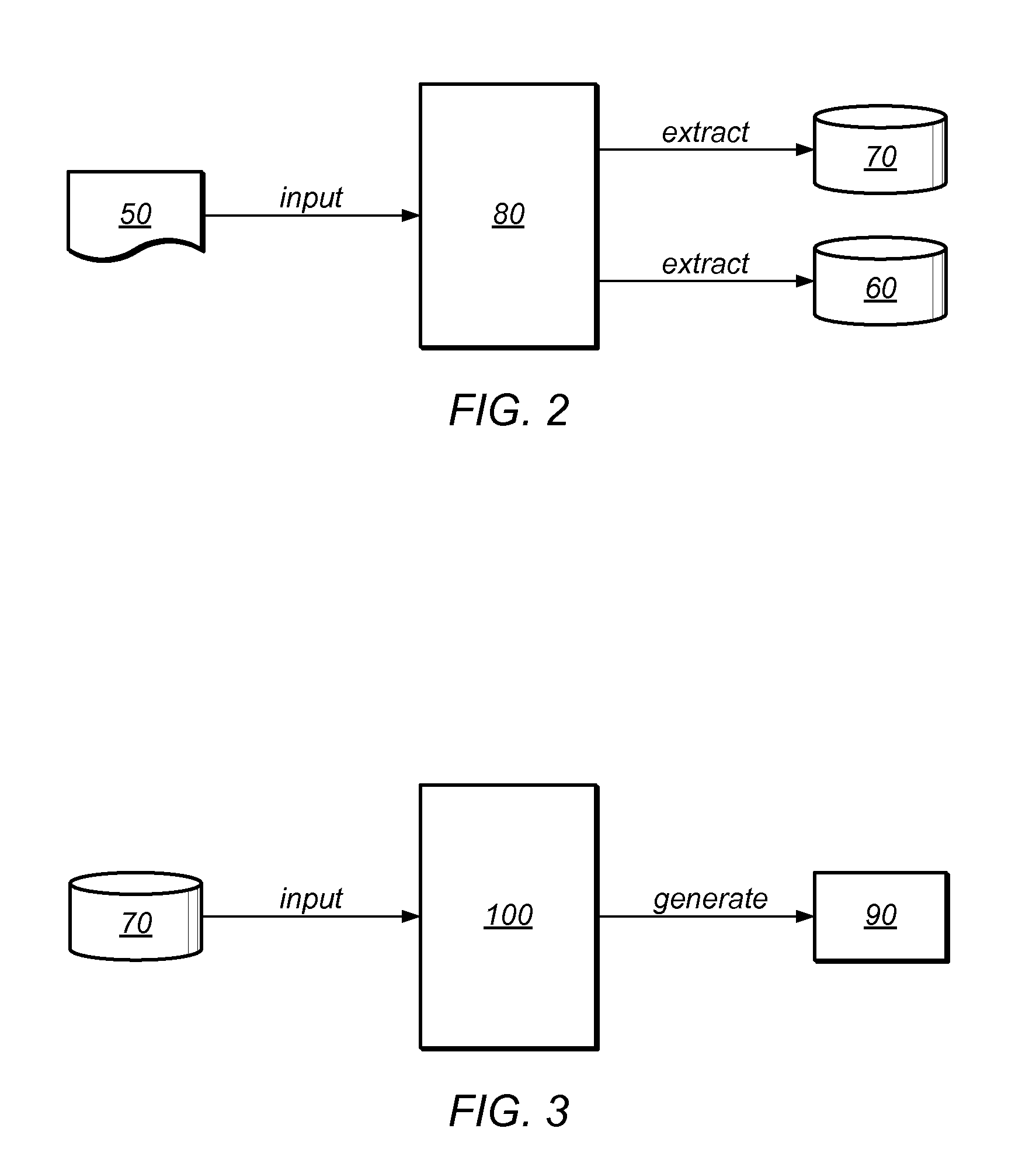[0011]Accordingly, the method of the present invention may provide two files describing the interface of a service implementation. The IDL file may be primarily used to describe the client-side by describing the interface information required from the client in order to enable the client to make a call for the service implementation. The information specific to the service implementation, e.g., the information for mapping language specific parts of the service implementation to the IDL description, may be comprised in the second file, the server-side mapping file (SVM). Thus, the client application may only need to provide the generic information necessary for calling the service implementation, e.g., the interface information. Unnecessary parameters or extensions to the IDL file
syntax, which are irrelevant for the client but required by the specific service implementation, may be avoided or kept out of the IDL file, thereby simplifying the creation of language bindings for the clients. Both files are provided at development time, e.g., sometime before the actual execution of the service implementation.
[0012]In one embodiment, the interface information provided by the client application may be mapped to a format required by the service implementation by mapping the parameter and data-type information comprised in the IDL file to the parameters and data-types expected by the service implementation. Thus, the language specific aspects of the service implementation can be kept separate from the IDL file. This is advantageous, for example, in the following case: older
programming languages such as 3GL languages may contain data-types which can not be mapped directly to data-types known to IDL or modern languages such as, for example,
Java, C# or
SOAP. In these cases, it may be necessary to examine the usage of the
data type and to create different IDL structures depending on the determined usage type in order to simplify the client-side language bindings. In the prior art this is not possible, since the IDL file must exactly match the definitions of the service implementation. By contrast, embodiments described herein may result in an IDL file which may not exactly match to the service implementation. Further, the older languages may comprise pseudo-parameters, as e.g. “FILLER” in
COBOL, which have no semantic meaning. In the prior art, these parameters have to be contained in the IDL file and the client has to provide parameter values, although the parameters are completely irrelevant to the client. Providing a SVM file comprising a mapping which is adapted to the specifics of the implementation of the service, e.g., language specifics, solves the above outlined problems and provides more flexibility and simplified IDL files.
[0014]In another embodiment, a
remote procedure call (RPC) server may have access to the server-side mapping file in order to call a service implementation, located on the same or a different server, using the SVM file during runtime. The SVM file may be stored locally, e.g., in the same location as the RPC server, in order to reduce
access time and to avoid bandwidth consumption in a network. However, it is also possible to store the SVM file in a repository or in any other location which is not local. In these cases, the RPC server needs to have access to the SVM file, e.g., by using network connections or the like.
[0015]By using a separate RPC server having access to the SVM file related to the particular service, the working load of the implementation server executing the service implementation may be reduced, since the mapping of the incoming remote call is already performed on the RPC server. Further, by using a separate server having access to an SVM file, the service implementation may not need to have any knowledge of the SVM file. Thus the service implementation can be a legacy implementation, which may remain unchanged, e.g., as implemented years ago by its developer. Consequently, it can be called by the RPC server in the same manner as other applications might have called the service implementation up to now. In some embodiments, the RPC server may run on a different computer than the service implementation and on a different computer than the client-side language binding. However, it is also possibly that the RPC server may run on the same computer as on which the client-side language binding and the service implementation are executed. Further, any other combination such as e.g. RPC server and client-side language binding running on the same computer or the like, are possible.
[0016]The server-side mapping file may be made accessible for the
remote procedure call server by a deployment
wizard, which may support the developer in deploying the server mapping to the RPC server or any other location and thus simplify this procedure for a developer. The RPC server may work together with the deployment
wizard to receive the server mappings. Further, the deployment
wizard may be integrated in a
workbench.
[0018]In a further embodiment, an extractor wizard may be used for extracting the necessary information for generating the
interface definition language file and / or the server-side mapping file. Alternatively, separate and different extractor wizards can be used for the IDL file and the SVM file, which may be adapted to the special requirements for extracting the information for these files. The extractor wizard may simplify and may at least partly automate the extraction process supporting the developer who thus does not have to manually execute the whole process.
 Login to View More
Login to View More  Login to View More
Login to View More 


